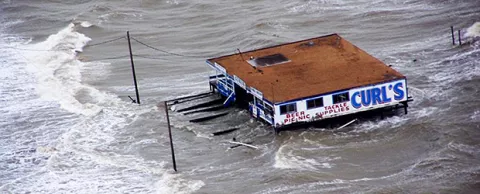
Nearly a dozen people died in central Texas over Memorial Day weekend last summer when heavy rains triggered flash floods. But their lives likely could have been saved with a data analytics-based warning system that costs only about as much as a truck.
Philip Bedient, a civil engineering professor at Rice University, built such a system to protect the university and the Texas Medical Center. It performs analytics based on radar, rain gauge information, bayou stage data and hydrologic modeling, giving managers time to get everyone to safety. It’s been working well for 15 years.
In a blog post he explains how it works — and how to avoid the bureaucratictraps local governments repeatedly fall into that get in the way of protecting people. It’s critically important. Due to the changing climate, the number of cities at risk for severe floods is growing exponentially.
Options are available. For example, Council Associate Partner CH2M offers a complete suite of flood modeling software. Lead Partner Bechtel has been behind innovative mitigation efforts. Help is available. You just have to take it. The flood waters are coming. — Kevin Ebi
1. Stop making excuses and do something
Even when cities see a need for better flood warnings, they rarely do anything. City attorneys usually stop them. The problem is this: Attorneys claim that the National Weather Service is the weather expert. And if cities get into a business that isn’t their area of expertise, they open themselves up to liability.
But as Bedient points out, the bigger problem is that the current flood warning system is clearly broken. People regularly die. In his case, he built a flood warning system for his university’s medical center; he’s making no warranties to the larger community. However, as floods become more severe and widespread, the bigger risk to cities may be doing nothing.
2. Give warnings in clear language
The average citizen isn’t a meteorologist or a hydrologist. Bedient says nobody knows what “6 inches of rainfall in 3 hours” means. Is that a lot? Am I in danger?
It’s easy for people to dismiss what they don’t understand. Give people clear information that they can understand so that they can make smart decisions. It just may save you money on your rescue and recovery efforts.
3. Make your warnings specific
Bedient says the biggest problem is that storm warnings are far too general. The National Weather Service only issues warnings on a county-by-county basis. But counties are big. Such a general warning is too easy for people to ignore.
Such general warnings are also of little value to emergency responders. In Texas’s severe floods, many people die or become trapped in their cars. Knowing which specific roadways pose the biggest threats would allow them to get out and block them off before people get hurt.
More stories …
City of Calgary: Using data to predict and mitigate floods
More coastal cities could be seriously flooded. Is yours prepared?
Coastal cities getting smarter about flood control



